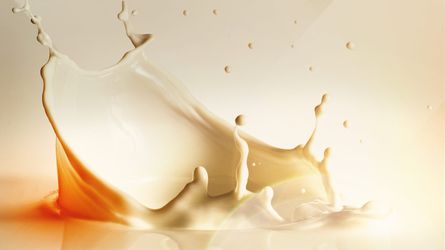
Food & Beverage Industry
Use LEWA pumps and system solutions for your homogenization processes in the food and beverage industry. Ask our experts for more information!
Read more
With high-purity systems adapted to customer requirements, LEWA provides solutions for the demanding tasks of homogenizing milk:
What happens during homogenization?
During homogenization, various liquids that are insoluble with each other are mixed into a single solution. Achieving this requires minimizing the droplet size of the dispersing liquid to a small, unchanging diameter. This is accomplished through high-pressure relaxation. The substance runs through a high-pressure pump, is condensed and then relaxed with a homogenization valve. This produces solutions with the desired properties and high stability. Homogenization is extremely important for the pharmaceutical and biotechnology industries because, for example, even the smallest quantities of a medication must contain the same percentage of the active ingredient. By means of homogenization it is possible to achieve an absolutely uniform mixture.
Why are dairy products homogenized?
Fat globules contained in milk and oil are fragmented by homogenization. This process prevents the formation of cream (separation of cream and water). Natural fat globules have a diameter of 10 to 30 μm; depending on the pressure applied, homogenization can decrease the size to less than 1 μm. For this purpose milk is heated (here: 50 – 70 °C) and forced through a homogenization valve. Homogenization breaks the original membrane of fat globules. Only pasteurized milk can be homogenized, as otherwise the activation of lipase causes a strong rancid taste.
Homogenization is particularly important for the production of infant formula because it does not only contain milk and various oils but also other nutrients. Further processing of an unhomogenized liquid to powder would lead to a hardly soluble product.
Source: Lebensministerium.at and wikipedia.org